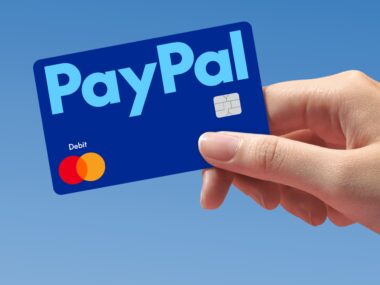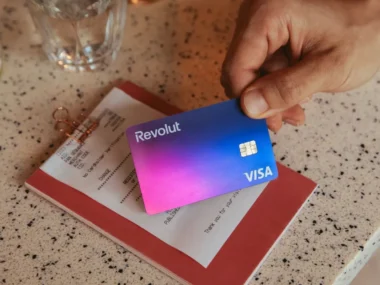If you’re considering a personal loan, you’re not alone. Many people across Europe use personal loans to cover a range of needs—from home improvements and car purchases to consolidating debt or paying for education.
Personal loans offer flexibility that other forms of credit don’t, but finding the right one for your situation can feel overwhelming.
Personal loans in Europe come in different shapes and sizes, offered by banks, credit unions, online lenders, and peer-to-peer platforms. Each lender has its own terms, interest rates, fees, and eligibility requirements. Knowing what to look for and how to compare your options is key to getting the best deal.
What Is a Personal Loan?
A personal loan is a fixed amount of money borrowed from a lender, which you repay over a set period with interest. Most personal loans are unsecured, meaning you don’t have to put up any asset as collateral, but some lenders offer secured loans at lower interest rates if you can provide security such as your home or car.
Interest rates can vary widely, often influenced by your credit score, income, and loan term. Loan amounts and repayment periods also differ depending on the lender and your financial profile.
How to Start Choosing the Best Personal Loan
When you begin your search, consider your financial needs and goals. Ask yourself:
-
How much money do I really need?
-
How long can I comfortably take to repay the loan?
-
What will I use the loan for?
Knowing the answers helps you avoid borrowing more than necessary and find a loan with terms that fit your budget.
Key Factors to Compare Between Personal Loans
When comparing loans, here are the most important things to consider:
1. Interest Rates and APR
The interest rate is the cost of borrowing money, expressed as a percentage. In Europe, personal loan rates can range from around 3% to over 15% APR, depending on your creditworthiness and the lender.
Always look at the Annual Percentage Rate (APR), which includes the interest rate plus any fees. APR gives you a clearer idea of the total cost.
2. Loan Amount and Term
Loan amounts can vary widely—from a few hundred euros to tens of thousands. The repayment term affects your monthly payments: longer terms mean smaller payments but more interest paid overall.
Choose a loan amount and term that won’t strain your monthly budget.
3. Fees and Charges
Some loans come with upfront fees, late payment fees, or early repayment penalties. These can add up, so read the fine print carefully.
Many lenders in Europe offer personal loans with no early repayment fees, which can save you money if you want to pay off the loan faster.
Where to Look for Personal Loans in Europe
You have several options when it comes to finding a personal loan:
-
Traditional banks: Well-established and trusted but sometimes with stricter approval criteria.
-
Credit unions and building societies: Often offer competitive rates and more personal service.
-
Online lenders: Convenient and fast, often with easy application processes.
-
Peer-to-peer platforms: Connect borrowers directly with investors, sometimes offering better rates.
Websites like Trusted Shops can help you find trustworthy online lenders in your country.
What Banks Look for in Loan Applications
When you apply, lenders will evaluate:
-
Your credit score and history: This shows how responsible you’ve been with past borrowing.
-
Your income and employment status: Steady income means you’re more likely to repay.
-
Your existing debts: Lenders check your debt-to-income ratio to understand your overall financial health.
-
Your residency and identification documents: Proof of address, ID, and sometimes bank statements.
Being prepared with these documents speeds up the process.
Tips to Improve Your Chances of Getting Approved
-
Check your credit report for errors before applying.
-
Pay down existing debts to improve your debt-to-income ratio.
-
Avoid applying for multiple loans at the same time.
-
Choose a loan amount and term that matches your financial situation.
How to Apply for a Personal Loan
Most lenders allow you to apply online through their official websites. You’ll fill out an application form, provide identification and income details, and submit documents as requested.
Some lenders provide instant decisions; others may take a few days to review your application.
If approved, you’ll receive the loan funds directly into your bank account—often within 24 to 72 hours.
What Happens After You Get the Loan?
Once you receive the loan, create a budget to ensure timely monthly payments. Paying on time helps maintain or improve your credit score.
If you can, pay more than the minimum monthly payment. This reduces interest paid and shortens the loan term.
Many lenders offer online account management tools or mobile apps to help you track your payments.
Final Thoughts
Choosing the best personal loan in Europe is about matching your needs with the right lender and terms. It’s easy to get lost in the numbers, but focusing on total cost, your ability to repay, and the lender’s reputation will guide you in the right direction.
Don’t rush. Use comparison websites like MoneySuperMarket to view your options. Take your time to read the terms and fees for each loan.
A personal loan is a powerful tool when used responsibly. It can help you achieve your goals, whether it’s improving your home, paying for education, or managing debt. But borrowing more than you can repay or missing payments can create problems.
Plan carefully, borrow wisely, and keep track of your repayments. That’s the best way to make a personal loan work for you.
For trusted and current personal loan offers, visit the official pages of European lenders such as:
These sites offer detailed information on eligibility, rates, and application steps to help you find your best option.


